While not as prominent in guitar pedals as coupling capacitors, decoupling capacitors are used in electronics and guitar pedals to help direct currents as needed. This is usually to smooth out DC electrical signals or prevent noise from AC signals.
This may seem very similar to coupling capacitors, but there is a big difference. Coupling capacitors are used to separate sub-circuits and stop a DC signal from moving between them. Decoupling capacitors are more about AC noise.
Capacitors do a lot of things in guitar pedals, and acting as a decoupling capacitor is just one of these things.
Where Decoupling Capacitors Go In A Circuit
You’ll notice that decoupling capacitors usually go to ground, so you see them in a circuit like this:

In a situation like this, a decoupling capacitor is usually either diverting an AC signal that may be causing noise, or smoothing out a DC signal.
In guitar pedals, we’re usually not terribly concerned about the noise from AC (although there are times that this is the case). More often than not, if a capacitor is filtering out some sort of AC signal, it’s because it’s part of a low pass filter. Here a larger valued capacitor will pull the lower frequencies to ground while a smaller valued capacitor will pull the higher frequencies to ground. This is different from general noise filtering with decoupling capacitors, but the principle is the same.
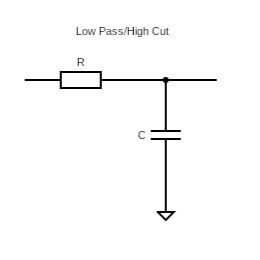
In fact, when designing non-guitar pedal electronics, two decoupling capacitors of different values are often used in order to divert all frequencies of AC noise; if that’s a concern for the circuit in question.
Decoupling Capacitors And DC Smoothing
The nice thing about capacitors is that they can store electrical energy and also release it quickly if needed. This means that any sudden changes in voltage can be easily rectified by said capacitor to keep a steady voltage going to whatever needs it.
Since most modern electronics that need a DC supply use a converted AC power supply, dips in the voltage are common. A decoupling capacitor can be used to smooth out these dips, leaving a steady (or close enough to steady) power supply.
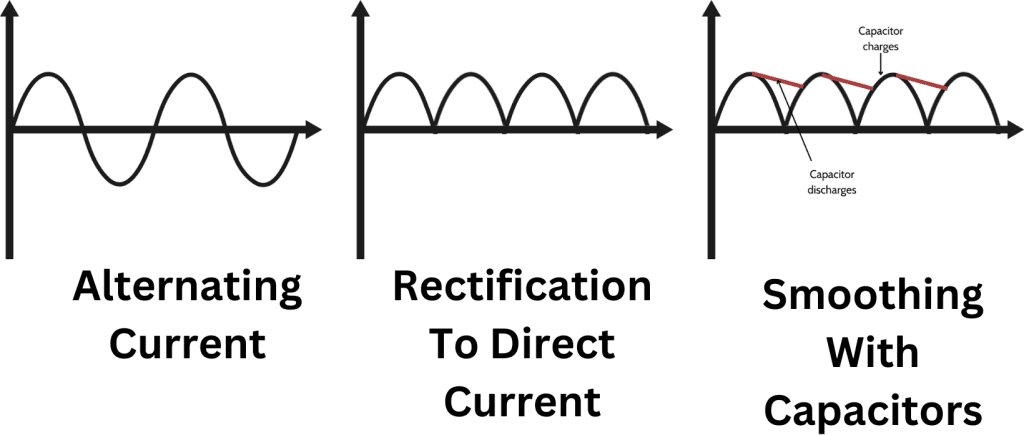
This is why you often see a capacitor going to ground near the power supply in guitar pedal circuits.
Decoupling Capacitors Acting As Bypass Capacitors
In a lot of circuits that involve a transistor to either boost a signal or cause transistor clipping, you’ll often see a capacitor near the emitter.
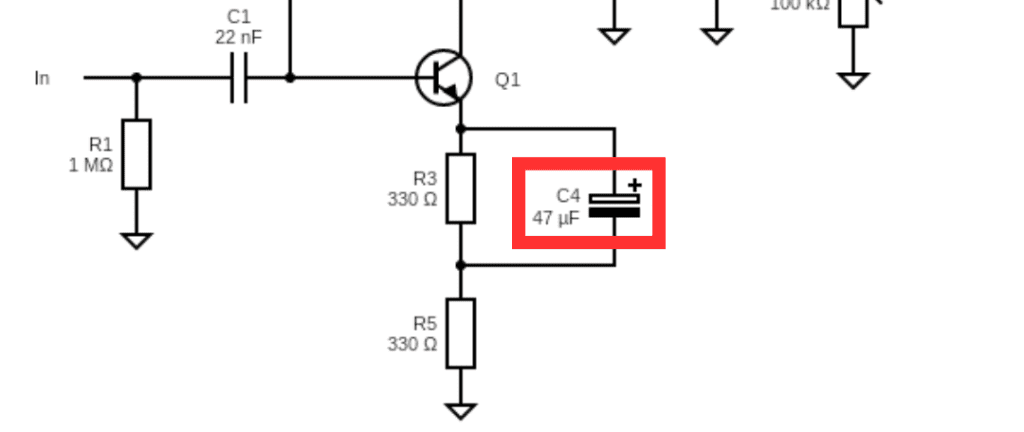
While the AC signal should be moving out of the collector and make loud and wonderful noises, any AC signal that goes through to the emitter will effect the emitter resistor (R3 in this case). The capacitor at C4 diverts the AC signal around R3, ensuring the appropriate voltage drop across the resistor getting the desired amount of gain from the transistor.
Basically speaking, a bypass capacitor keeps the AC voltage for R3 at zero, making it act as expected rather than fluctuating depending on the voltage swings of a sound signal’s AC voltage.
Enjoying This Component Guide?
Learn more about capacitors and other guitar pedal components.
Decoupling Capacitors In Guitar Pedals
I’ve already talked about more than a few examples in this article. We have:
- Low pass filters using the principles of a decoupling capacitor to filter out specific guitar frequencies.
- DC smoothing to ensure a steady supply of electricity to the pedal’s circuit.
- Bypass capacitors to make emitter resistors act predictably.
An example of the last two is on the circuit for the Lovepedal Purple Plexi. I’ve put a box around them below:
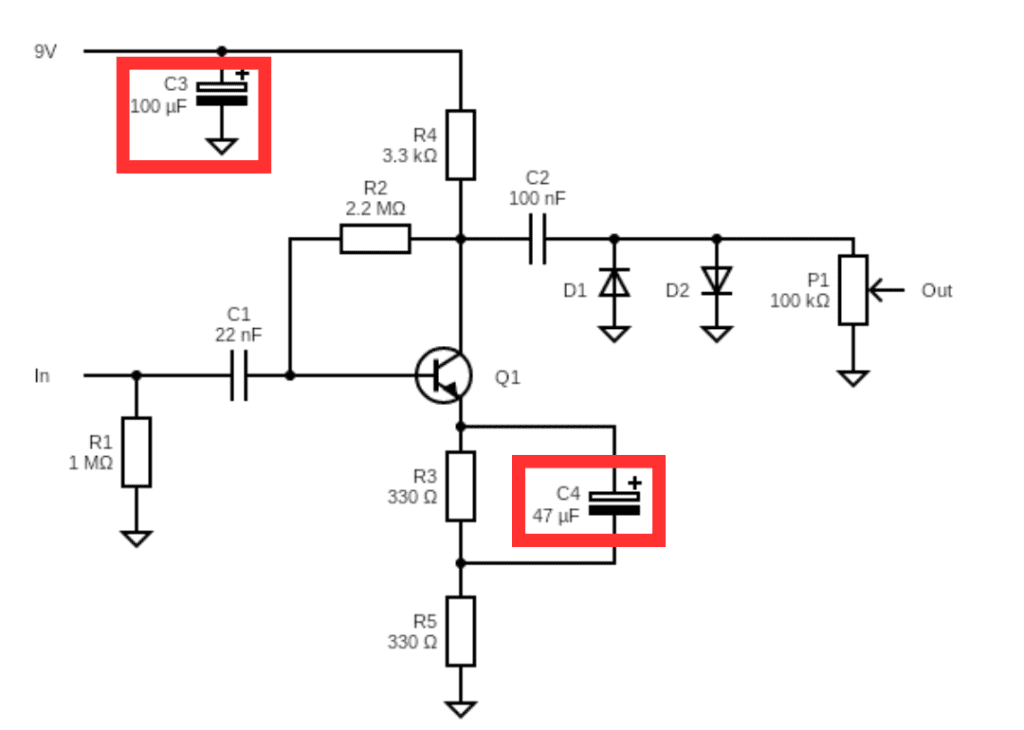
If you want to see another example, check out the schematic and stripboard layout for a Vox Tone Bender, they’re pretty obvious!
Now Go Build Some Stuff
As mention, decoupling capacitors aren’t quite as prominent in guitar pedals as something like coupling capacitors, but they’re still used a lot, even if they’re not as obvious.
It just goes to show that every component in a circuit has something to do, and they’re useful. Hopefully this gives you some information for designing your own circuits, or at least modifying or replacing parts in something you’re building.
Related posts:
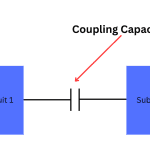 What Are Coupling Capacitors?
What Are Coupling Capacitors?
 Ultimate Guide To Resistors In Guitar Pedals: What They Do And How They Work
Ultimate Guide To Resistors In Guitar Pedals: What They Do And How They Work
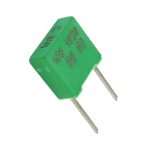 Ultimate Guide To Capacitors In Guitar Pedals: What They Do And How They Work
Ultimate Guide To Capacitors In Guitar Pedals: What They Do And How They Work
 Ultimate Guide To Diodes In Guitar Pedals: What They Do And How They Work
Ultimate Guide To Diodes In Guitar Pedals: What They Do And How They Work
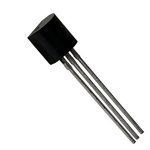 Ultimate Guide To Transistors In Guitar Pedals: What They Do And How They Work
Ultimate Guide To Transistors In Guitar Pedals: What They Do And How They Work
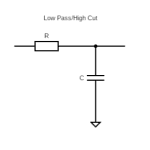 How High Pass And Low Pass Filters Work In Guitar Pedals
How High Pass And Low Pass Filters Work In Guitar Pedals
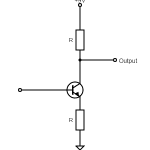 What Is Transistor hFE?
What Is Transistor hFE?
 The Difference Between Silicon And Germanium Transistors
The Difference Between Silicon And Germanium Transistors
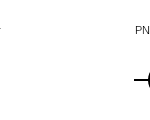 The Difference Between NPN And PNP Transistors
The Difference Between NPN And PNP Transistors
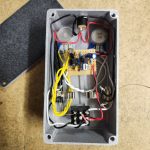 How To Wire Guitar Pedal Enclosures
How To Wire Guitar Pedal Enclosures
